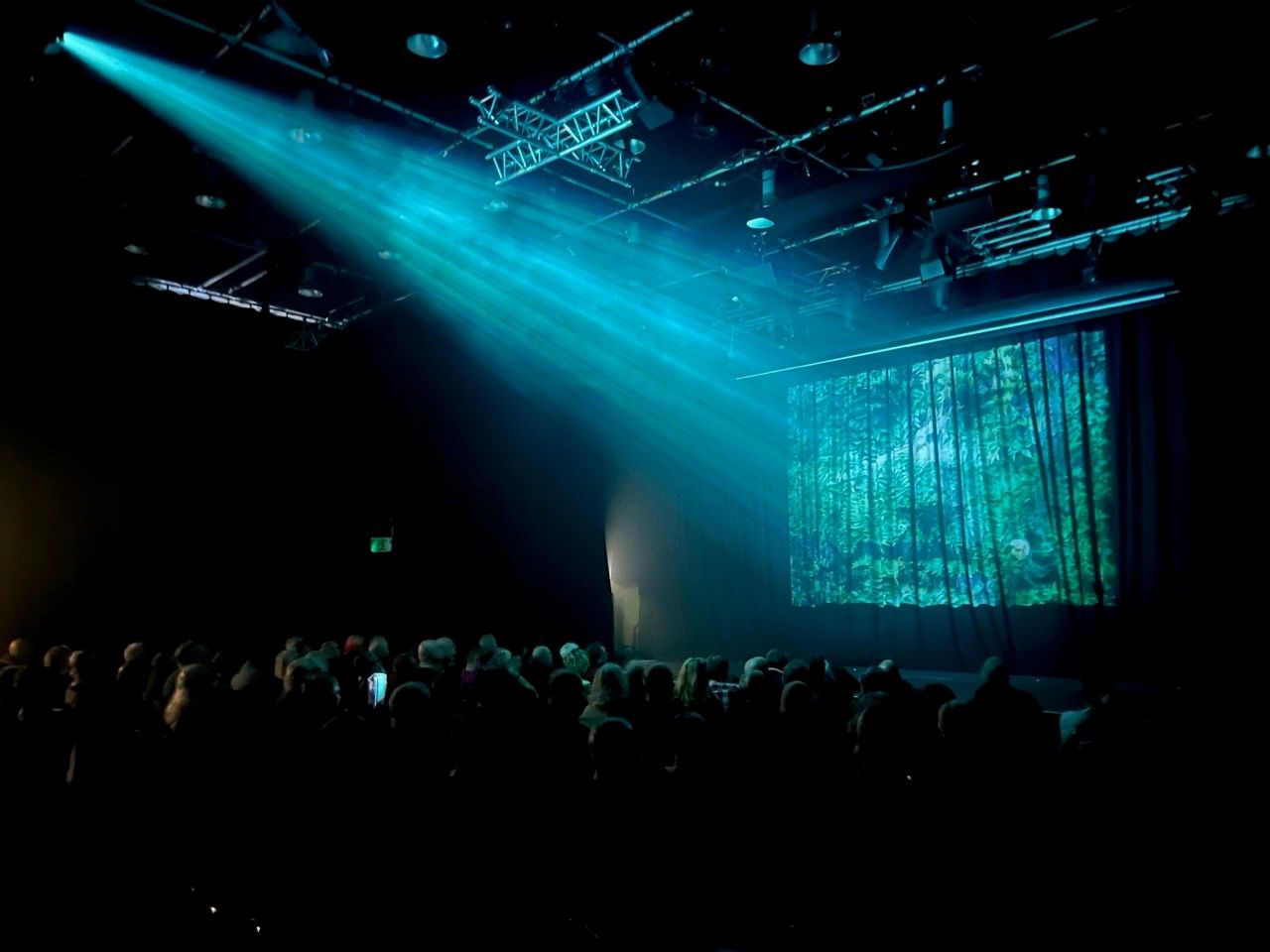Live events and spatial audio

(Pictured above (on large-screen devices only): a deep-listening event from Loss Gain, featuring the music of John Foxx)
What are the main benefits of spatial audio systems for live music venues, for both audiences and performers?
Spatial audio greatly enhances realism and storytelling in theatrical productions and benefits all music events by localising sound to musicians on stage, letting audiences experience the full spread of sound rather than just the nearest speakers. Many systems, often 180°, were created to improve stage clarity.
Artists gain as well, since traditional stereo can lose detail, but spatial setups with more speakers allow each part to stand out. Full 360° systems extend music’s impact into the audience, creating a powerful, immersive connection and new creative opportunities.

John Best and David Sheppard
In electronic music, spatial audio can shift focus from the stage to the audience, while acoustic sources remain tied to the stage. Removing live players enables unique immersive experiences, whether pre-recorded or streamed live.
How does spatial audio change the creative possibilities for artists and sound engineers during live performances?
Spatial audio opens up new creative horizons for artists; it enables them to play with how elements move and interact, deepening emotional connections - whether it’s making sounds dance around the audience or creating moments of total immersion. The ability to separate sounds more clearly also helps realise complex arrangements, making tonal details and rhythmic relationships stand out. Delicate moments that might feel risky through a traditional left/right PA can gain an extra dimension of “spatial magic” when brought into the room.
For engineers, improved stage clarity is a significant advantage, making it easier to achieve a balanced mix. Spatial systems also give front-of-house engineers more creative control and expressive possibilities, turning live mixing into a true performance art.
Are there particular genres or types of events that benefit most from spatial audio technology?
Spatial audio enhances a wide variety of events. In live music, it’s already found regular use in theatrical productions, where a 180° main system can improve clarity and quality for any amplified show. For 360° systems, electronic music is especially well-suited to spatial movement and full immersion.
Spatial audio is also ideal for black box venues, where the stage can be de-emphasized in favor of deep listening playbacks, sound and art installations, and even wellness and meditation experiences, where it can be a true game-changer.
What are the biggest technical or logistical challenges venues face when upgrading to spatial audio systems?
The challenges are clear: installing a ring of speakers at the correct height and spacing around the audience and across the stage, running independent cable feeds, providing enough amplifier channels, and networking for spatial processors. You may need a different FOH console to handle the extra channels, and the room may require acoustic treatment, as sound now comes from all directions. Additional time is needed for EQ, testing, and staff training to ensure everyone understands the system and workflow.
How do spatial audio systems integrate with existing venue infrastructure, such as lighting, acoustics, and legacy sound equipment?
Infrastructure is critical for installing a spatial system. Venues need the practical means to hang speakers and run cables around and above the audience, as well as the technical capacity for more amplifiers, networks, and computer control. Acoustics must be carefully considered. Most legacy audio equipment can be integrated, depending on the chosen spatial system and its infrastructure.
Venues may also want to rethink lighting and visual solutions, moving away from a strictly stage-based approach. As more experiences reach into the auditorium, the traditional separation between crowd and performers can give way to a more collective, immersive experience.
What advice would you give to venue owners or managers considering the transition to spatial audio?
It’s an exciting time for venues. Immersive shows are becoming more common, but often in large-scale or custom setups for specific events. For traditional gig venues, adding a spatial system can broaden the range of shows they can present and improve the quality of conventional concerts through superior sound positioning and object-based mixing.
Stay informed!
ISE is the world-renowned annual tech show for the AV and systems integration industry, taking place in Barcelona, 3-6 February 2026. For updates on audio for live events, venues, residences, corporate spaces and more, and to discover more about ISE 2026 as details are released, sign up for updates.
Don't miss out – join our community today and keep up to speed with all the latest industry trends.

)
)
)
)
)
)
)
)
)
)
)

)
)
)
)
)
)
)
)

)
)
)
)
)
)
)
)
)
)
)
)
)
)
)
)
)
)
)
)
)
)
)
)
)
)
)
)
)
)
)
)
)
)
)
)
)
)
)
.png/fit-in/500x500/filters:no_upscale())
)
)

)
)
)
)
)
)
)